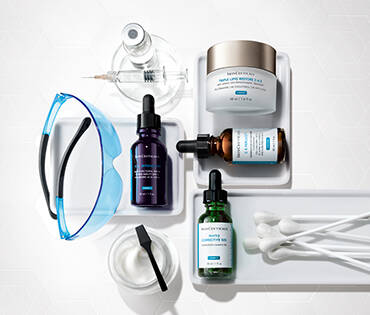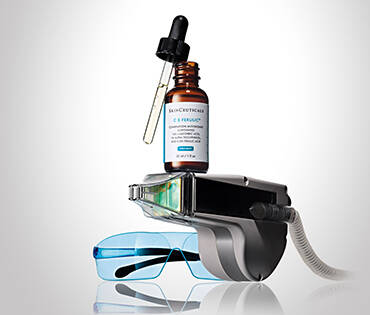PHOTODYNAMIC THERAPY
HELPS ADDRESS:
- Acne
- Rosacea
- Sun damage
- Actinic keratoses
- Wrinkles
- Enlarged sebaceous glands
- Psoriasis
- Basel cell carcinoma
- Some forms of mouth, lung and esophageal cancer
- Warts
- Macular degeneration
- Bowen’s disease (early form of skin cancer)
AVERAGE DOWNTIME: All forms of photodynamic therapy result in chemical sensitivity to light for the first 48-72 hours. All forms of natural light should be avoided and the use of a minimum 30 SPF sunscreen is recommended even if staying indoors. In general, a burning or stinging at the site of the PDT treatment is common for 24-48 hours with redness and/or swelling lasting up to a week. Scaling and peeling of the skin is common for 4-6 weeks as the damaged skin is replaced by new tissue. The degree of the post PDT treatment effects and downtime will vary based upon the photosensitizer and light source used in the photodynamic therapy. Because each case is unique, it’s important to consult with a trusted professional for more accurate recovery information and post-procedural instructions. FIND A SKINCARE PROFESSIONAL NEAR YOU >
PHOTODYNAMIC THERAPY TREATMENT AT A GLANCE
WHAT IT DOES: Photodynamic therapy is a non-invasive treatment utilizing a photosensitizing agent and a light source to selectively destroy abnormal cells via oxidative damage. First, a photosensitizing liquid, cream or intravenous drug is applied or administered. An incubation period of minutes or days follows allowing the photosensitive molecules to be absorbed by the target tissues. Finally, the target areas are exposed to a light source emitting a specific wavelength of light which activates the photosensitizing medication, creating oxygen radicals which destroy the problematic tissue.2
WHAT YOU NEED TO KNOW: Photodynamic therapy is quite broad in the ways it can be administered. The photosensitizing chemical may be different and red light or laser may be used in lieu of blue light. These treatment options account for the many different names used for photodynamic therapy. For example, photodynamic therapy may also go by ALA therapy, a name derived from a common topical photosensitizer, 5-aminolevulinic acid (ALA).
More recently an alternate method of administering a PDT treatment has emerged called “daylight PDT”. In this method, the photosensitizing medicine is left on the skin for a shorter amount of time and then exposed to a source of continuous illumination (such as sunlight) for an extended period (usually around 2 hours). This approach has been shown to be as effective with less patient discomfort. However, all forms of photodynamic therapy result in extreme light sensitivity and will require a period of light-avoidance.


FEATURED PRODUCT
Metacell Renewal B3
THE CHEMICAL PEEL EXPERIENCE
PHOTODYNAMIC THERAPY FAQS
*Always consult your physician before undergoing this procedure.
POST-TREATMENT SKINCARE ROUTINE
**It is recommended to incorporate an at-home skincare regimen after this procedure; always consult with your physician before using a regimen for individual at-home advice.
***Follow all product use instructions and warnings.
****If irritation occurs, discontinue use; if irritation persists, consult your physician.
DISCOVER PROFESSIONAL TREATMENTS
1https://www.ncbi.nlm.nih.gov/pmc/articles/PMC7376476/
2https://www.ncbi.nlm.nih.gov/pmc/articles/PMC8223074/
3https://www.ncbi.nlm.nih.gov/pmc/articles/PMC5874669/
4https://www.ncbi.nlm.nih.gov/pmc/articles/PMC9838775/
5https://www.yalemedicine.org/conditions/photodynamic-therapy#:~:text=What%20does%20the%20skin%20look,%2C%20skin%20returns%20to%20normal.)
6https://www.sciencedirect.com/science/article/abs/pii/S0738081X13000783
7https://europepmc.org/article/med/29600693
8https://www.ncbi.nlm.nih.gov/pmc/articles/PMC8223074/



.jpg?sw=370&sh=315&sm=cut&q=70)

.jpg?sw=370&sh=315&sm=cut&q=70)

